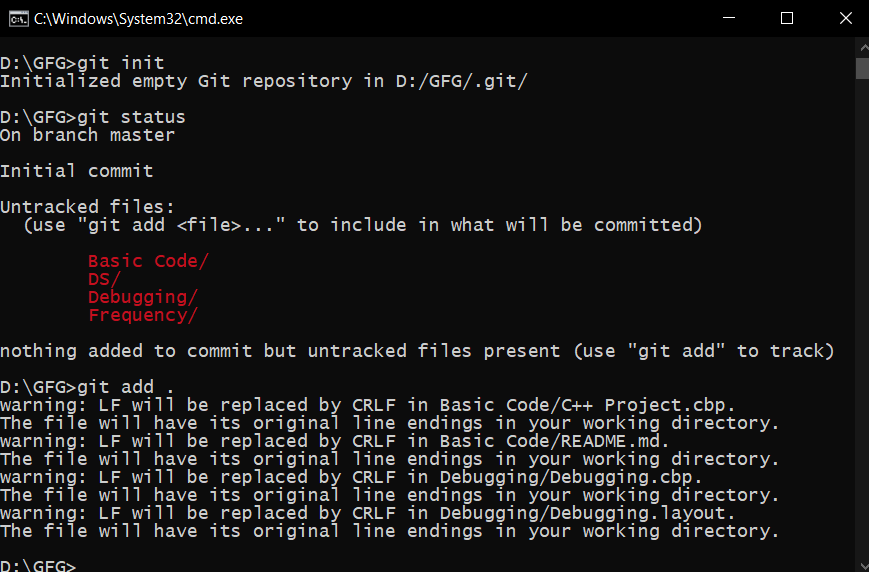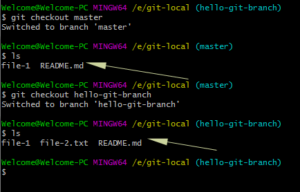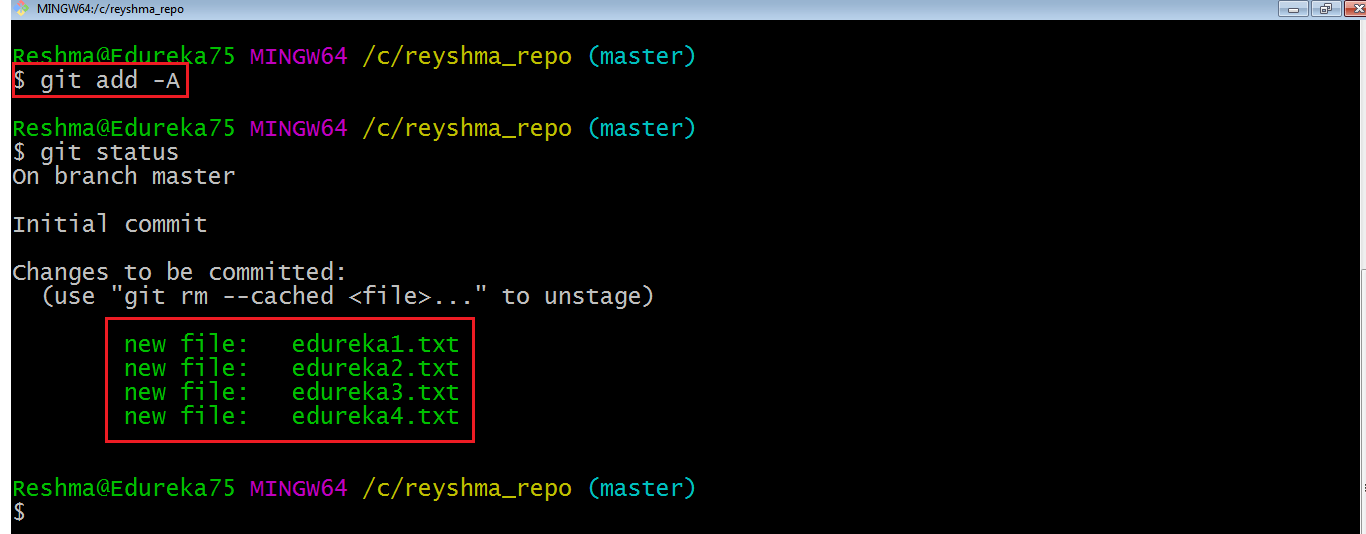

Git commit -m "Message that describes what this change does" git rm -r myfolder to remove a folder (and stage it).git rm example.html to remove a file (and stage it).

Another way to do this is using git rm command, which both deletes a file and stages it all with one command: If you delete files they will appear in git status as deleted, and you must use git add to stage them. (replace example.html with your file or folder) Deleting Files If you accidental stage something, use the following command to unstage it:

You should see there are changes ready to be committed. Check the status again by entering the following command:ģ. You can repeat the above commands for different files and folders.Ģ.If the file name/path has a space, wrap it in quotes.Stage a folder: git add myfolder (replace myfolder with your folder path).Stage a file: git add example.html (replace example.html with your file name).Enter one of the following commands, depending on what you want to do: You'll see what branch you are on (which for new repos will be master) and status of files (untracked, modified, or deleted).
Git add all new files windows#
In your terminal (Terminal, Git Bash, or Windows Command Prompt), navigate to the folder that is your Git repo.ģ. Let's first check the status of our Git repo.ġ. Even the deletion of a file must be tracked in Git's history, so deleted files must also be staged and then committed. We add files to a staging area, and then we commit what has been staged. You don't want to be forced to commit both files, just the one that's ready. Why must we do this? Why can't we just commit something directly? Let's say you're working on two files, but only one of them is ready to commit. This is called staging and uses the add command. Stagingīefore we make a commit, we must tell Git what files we want to commit (new untracked files, modified files, or deleted files). So how do we tell Git to record our changes? Each recorded change to a file (or set of files) is called a commit. Now we can run git add or git add / to cherry-pick folder to stage.Think of Git as keeping a list of changes to files. ConclusionĪdd folders is most the same as adding files. Now that all folders are untracked, we can test the code. We will put back the folder2 to the unstaged and put it staged again to test this. folder2/ instead of git add -all folder2/. also means all but not equivalent with -all. The folder2/text1.txt file and folder are now added to the staged contents. We will add that, while folder1 will be left unstaged. There is no staged file or folder in this sample practice yet. The folder1/ and folder2/ are untracked files and not included in the files and folders which are ready to be committed.

Nothing added to commit but untracked files present (use "git add" to track) On Git Bash, run the following code: git status To create a file, run the following command: touch text1.txt Inside folder1, add a text document and name it text1.txt. Create two new folders inside the project folder, and name them folder1 and folder2. Initialized empty Git repository in C:/You/Documents/project-folder/.git/ Inside the project folder, open Git Bash. git add -all /Ĭreate Project Folder With 2 Folders and Files to Test git add in Gitįirst, create a folder using this command: mkdir project-folder Use git add to Add All or Specific Folders and Files to Stage Content in GitĪdd a folder using this syntax: git add folder1/įor older versions of git, add the -all flag and add forward slash at the end of the folder name. This tutorial will tackle git add in a modern way. Git add is used to add specific folders and files.


 0 kommentar(er)
0 kommentar(er)
